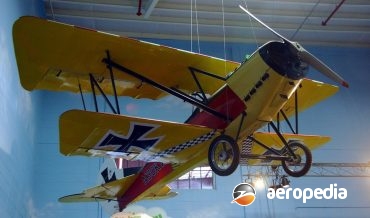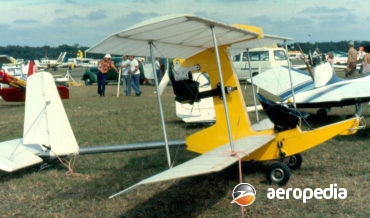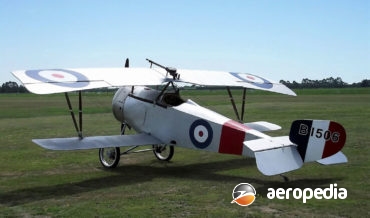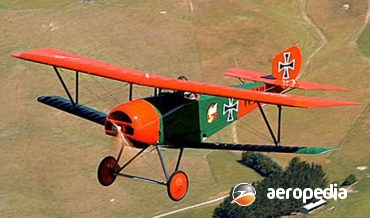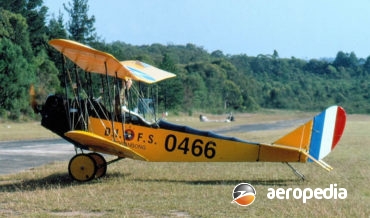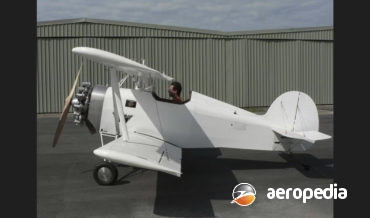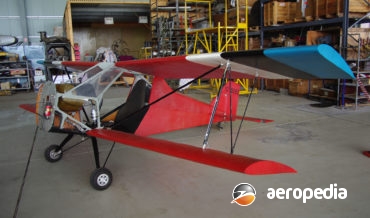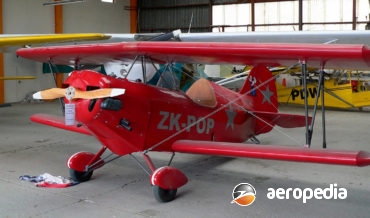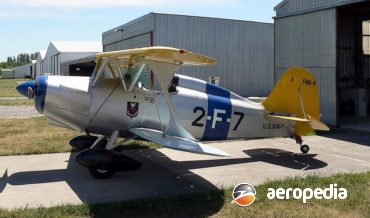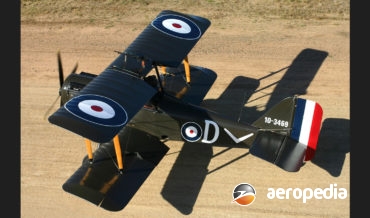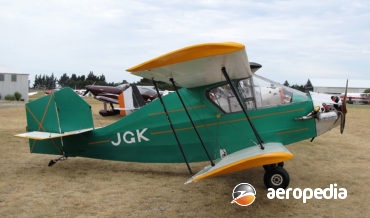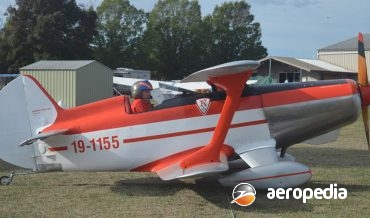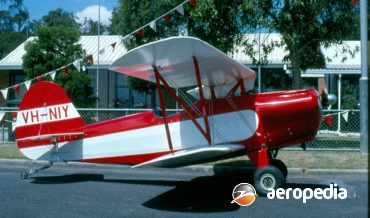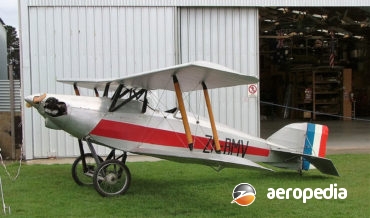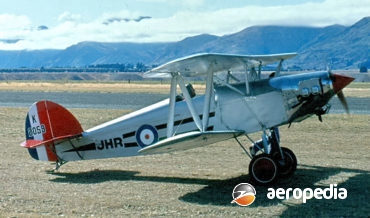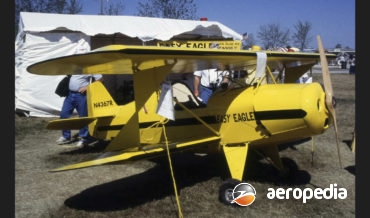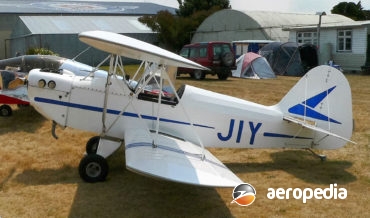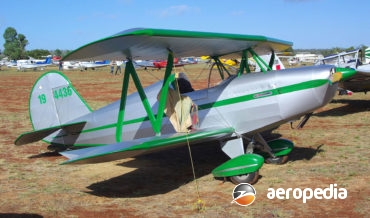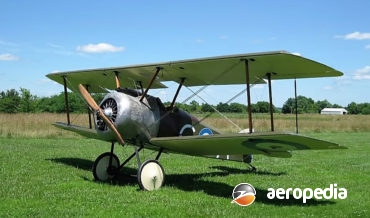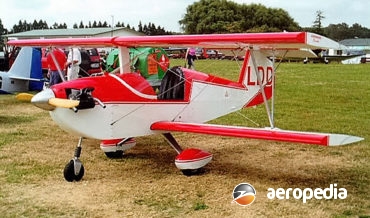Contents
Single-Seat Light Sporting Biplane
The White Der Jager is a single-seat light amateur-built biplane designed and market by White Aircraft, being designed by Marshall White, and is a development of the Stolp SA-500 Starlet, the intention being to make the aircraft similar in appearance to a World War I biplane.
David C. Eyre
- March 23, 2020
The Whing Ding was designed by Mr R W Hovey as an ultra-light aircraft which would require minimal construction time, would have STOL performance, and capable of easy dis-assembly for transportation and storage.
David C. Eyre
- August 24, 2019
Circa Reproductions in Canada is a company which produces plans to build 87-percent scale World War I aircraft, the aircraft design being produced by Graham Lee of Lamont, Alberta. Leading Edge Air Foils, based at Peyton in Colorado for a time provided construction kits for the designs.
David C. Eyre
- May 17, 2019
Circa Reproductions in Canada is a company which produces plans to build 87-percent scale World War I aircraft, the aircraft design being produced by Graham Lee of Lamont, Alberta.
David C. Eyre
- May 17, 2019
The Jenny is a two-thirds scale (67%) replica of the Curtiss JN4D Jenny of the 1920s and is a single-seat ultra light of biplane configuration. Although the design appears to have a second cockpit, this is non functional. The airframe is gusset riveted aluminium tubing with dacron covering.
David C. Eyre
- May 17, 2019
The Whitney scamp is a light sporting biplane with open cockpits designed by Mr W ‘Bill” Whitney in Queensland for amateur construction by Mr. Hargrave.
David C. Eyre
- May 8, 2019
The WAACO Staggerbipe was first produced in the early 1980s by the West Australian Aircraft Company of Box Hill, VIC as a single-seat light sporting biplane and was made available in kit form for the amateur constructor.
David C. Eyre
- May 8, 2019
The Special biplane was designed and made available to the amateur builder by RagWing Aircraft Designers of Belton, South Carolina, and is a low powered aircraft similar in configuration to the Pitts S-1 designed to create a relatively fast machine for cross-country flying but very small and powered by relatively
David C. Eyre
- May 8, 2019
The Stolp SA-100 Starduster was designed by Louis Stolp in the United States as a single-seat light sporting biplane and was aimed at the popular sport aviation market in America at that time.
David C. Eyre
- May 8, 2019
Squadron Aviation in Ohio in the United States produced a number of scale replicas of World War I fighters, including the Spad XIII, Fokker D-VII and the RAF SE-5a.
David C. Eyre
- May 8, 2019
Sorrell Aviation in the United States produced a series of ultralight aircraft, including the Guppy and the Hiperlight.
David C. Eyre
- May 8, 2019
The Knight Twister is a single-seat, single-engine, aerobatic sport biplane designed in 1928, built and first flown in 1932 by Vernon W Payne, and since then it has been marketed in plan form for home constructors.
David C. Eyre
- May 8, 2019
The Baby Lakes was a scaled-down version of the very popular Great Lakes Sports Trainer designed by Barney Oldfield in Cleveland, Ohio, for the amateur builder.
David C. Eyre
- May 8, 2019
Mr Alan William McFarlane of Coburg, VIC in 1936 purchased an incomplete Heath Parasol light aircraft, work on which had been carried out by a Mr James Keen.
David C. Eyre
- May 8, 2019
The Lincoln Sports light biplane for amateur construction was designed in the USA in the 1920’s by Mr S Swanson of Vermillion, North Dakota.
David C. Eyre
- May 8, 2019
In 1961 John O Isaacs of Southampton in the United Kingdom commenced the design of a seven-tenths scale wooden replica of one of Britain’s most famous biplane fighters, the Hawker Fury, which saw service with the RAF in the 1930s.
David C. Eyre
- May 8, 2019
Introduced to the market in 1998, the Easy Eagle light biplane was designed by Ronald Grosso, who initially supplied plans to interested builders, eventually the rights being obtained to supply plans by Cottage Grove of Wisconsin and in recent times it is marketed by Great Plains Aircraft Supply Co.
David C. Eyre
- May 8, 2019
The FP-404 is one of a series of ultra-light aircraft produced by Fisher Flying Products of Edgeley, North Dakota in the United States
David C. Eyre
- May 8, 2019
The Youngster was designed and is marketed by Fisher Flying Products of Edgeley, North Dakota, and is one of a range of light aircraft for construction by amateur builders
David C. Eyre
- May 8, 2019
The Blanch Biplane, also known as the Blanch Experimental, was designed and constructed by Mr A S E Blanch in the 1920s near Armadale, WA.
David C. Eyre
- May 8, 2019
The Airdrome Aeroplanes Sopwith Camel is a full-scale replica of the World War I fighter designed by Robert Baslee and marketed by his company, Airdrome Aeroplanes of Holden in Missouri.
David C. Eyre
- May 8, 2019
The Scamp was designed by Mr H L Woods for construction by amateurs, being intended to be simple to build and able to operate from grass strips.
David C. Eyre
- May 8, 2019
Recent Comments
Archives
Categories
- No categories
Categories
- No categories
Latest Posts
Newsletter

